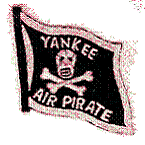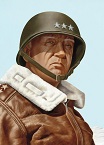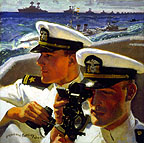el cid again
Posts: 16922
Joined: 10/10/2005
Status: offline

|
Spring 1942
Monsoon 1942
Reactivation of minor RR on New Caledonia (1 hex NW from Noumea)
Fall 1942
Winter 1942
Completion of Iranian National RR spur (2 hexes E from Abadan/Khorramshahr)
Completion of ALCAN highway as pioneer road (segments of 10 trail hexes, 8 trail hexes, and upgrading of 4 winter tail hexes to year around trail in 3 segments between existing road and rail lines in Canada and Alaska);
Deconstruction of the Eastern Malaya RR.
Spring 1943
Upgrading of Whitehorse & Yukon RR to main line completed (2 hexes NW from Skagway)
Monsoon 1943
Road along Burma-Siam RR line completed (5 hexes SE from Ye)
Hunan-Guanzi RR [73/55 Monsoon 1943]
Winter 1943
Completion of Burma-Siam RR (5 hexes SE from Ye)
Completion of ALCAN highway as secondary road (segments of 10, 8 & 4 trail hexes upgraded to minor road)
Spring 1944
Monsoon 1944
Upgrading of Bengal & Assam RR to main line completed (15 hexes from existing line near Jessore to Ledo including major river bridging; 8 hex spur to Chittagong) [Takeover 1 March 1944; 59/34 & 59/35 washout in Monsoon until 1944; Entire line upgrades during Spring 1944! Before this year, 59/34 SE & 59/34 are destroyed every Monsoon season!]
Ledo Road completed to Myitkyina [upgrading 4 trail hexes to minor road) [Hex 64/39 Winter 1943; 64/40 Spring 1944; 63/41 & 64/42 Monsoon 1944].
Winter 1944
Completion of the Yellowhead Highway to Prince Rupert (as a Minor Road)
Ledo Road completed to existing Burma Road near Lashio (upgrading 3 more trail hexes between Myitkyina and Lashio). [63/43 & 63/44 Fall 1944; 62/45 & 63/46 Winter 1944]
Spring 1945
Completion of the CANOL road from Camp Canol, Northwest Territory to Whitehorse, Yukon. [188/23 trail Fall 42, SRD Winter 42; 189/24 trail Winter 42, SRD Spring 43; 189/25 trail Spring 43, SRD Monsoon 43; 190/26 trail Spring 43, SRD Fall 43; 189/27 SW, E trail Winter 43, SRD Monsoon 44; 190/27 NW,W trail Monsoon 44, SRD Spring 45; 189/28 SE, NE trail Monsoon 44, SRD Spring 45; 189/29 trail Monsoon 43, SRD Spring 44; 190/30 trail Monsoon 43, SRD Fall 43; 190/31 trail Winter/42, SRD Spring 43; 191/32 trail Fall 42; SRD Spring 43]
Completion of the Longhai Railway to Tanshui. [82/38 SE Fall 1943; 82/38 W Winter 1944; 81/38 Spring 1945]
Completion of Sovietskaya Gavan Railway (from Komsomolsk na Amur) [121/39 SE Spring 1944; 122/40 Monsoon 1944; 123/40 Fall 1944; 123/41 Winter 1944; 124/42 Spring 1945]
Fall 1945
Completion of Sumatra RR (aka 'the second death railway') [46/83 W & 45/84 NE Spring 1945; 45/83 E Monsoon 1945; 45/83 SW Fall 1945; Trail 46/83 W & 45/84 NE Monsoon 1944; 45/83 Fall 1944; SRD 46/83 & 45/84 Winter 1944; 45/83 Spring 1945]
ENH Series: Winter 1945, Spring 1946 and Monsoon 1946 (OPTIONAL)
Completion of Burma-Yunnan RR [62/46 E, 63/46, 63/45 SW, 68/46 NW Fall 1945; 63/45 E, 64/45, 65/45, 67/45, Winter 1945, 66/44, 67/44 Spring 1946] This RR was surveyed and begun in 1941. It generally follows the main road route of the area. It is metric gage and is easier to build through mountains than standard gage would be. This is also the gage of the RR connecting at both ends. This includes extending the primary road from Kunming NW all the way to the mountains as well.
Partial repair of the Kunming-Haiphong RR [68/50 SE Fall 1945; 68/51 NW Winter, 1945; 68/51 SW Spring 1945, 68/52 Monsoon 1945]
Completion of the Liuchow-Kweiyang RR [75/50 SW Fall 1945, 75/50 NW Winter 1945, 74/49 SE Spring 1946]
Early construction of the Kweiyang-Kunming RR. [71/48 NE, 74/49 SW Fall 1945; 71/47, 74/50 Winter 1945; 72/47, 73/50 Spring 1945; 72/48, 72/49 Monsoon 1945]
Upgrading ALCAN to primary road (25 minor road hexes upgraded IF construction not suspended as IRL) [182/30, 183/30, 184/30, 190/32 W, 191/33 E, 192/33, 197/31, 198/31, 199/31 W, 200/31, 201/31, 202/32 Winter 1944; 184/31, 185/32, 189/32, 193/32, 195/31, 196/31 Winter 1945; 185/32, 186/32, 187/32, 194/32, 194/31 Spring 1945]
Completion of the Longhai Railway to Lanzhou [81/34 SE, 81/38 NE Fall 1945; 81/37 SW, 81/35, 81/37 Winter 1945; 81/36 Monsoon 1946]
Completion of the Northern Alberta RR to Fort St John [204/35 W Fall 1945; 205/35 Winter 1945; 203/34 SE Spring 1946]
Completion of the Alice Springs to Birdum RR. This was surveyed from 1939 to 1942 by the Australian Army but never built. Entire line completes by Winter 1945.
Completion of the Mt Isa to Tenant Creek RR. This was surveyed in 1943 by the Australian Army but never built. Entire line completes by Winter 1945. Tenant Creek is on the Alice Springs to Birdum RR listed immediately above.
Partial Completion of the BAM: The Baikal Amur Mainline was not completed until 1991. The first two segments are on the map - Taishet to Bratsk and then to Ust Kut. The last segment is added in 1944-45 - Komsomolsk to Sovietskaya-Gavan. But MOST of the work on the rest was done in 1944-1946 - just not rendered usable in that era. This was a classic "death railway" - about 90% of the 150,000 German and Japanese POWs working on it (until 1954) died. This option shows what a maximum effort could have completed from Fall 1945 through the end of Monsoon 1946. RR Fall 45 107/12 SE & 107/13 NW/SE; Winter 45 108/14 NW/SW; Spring 46 107/15 NE/SE; Monsoon 46 108/16 NW/SE; Fall 45 121/39 NW; 121/38 SE/NW; Winter 45 120/37 SE,NW; 120/36 SE/W; Spring 46 119/36 E/NW; 118/35 SE/NE; Monsoon 46 118/34 SW/NW; 118/33 SW/NW]
House Rule: Do not repair the oil wells and refinery at Whitehorse, Yukon until May, 1945. These model the Canol pipeline and a refinery moved from Texas and it took until June, 1945 to get them fully operational. An ALTERNATE option is to repair the oilfields and oil refinery at Kenai, Alaska. This is probably not feasible in Winter (how could you move enough supplies to even begin?) - but it was a known option not taken (due to greater risk of Japanese capture). In strictly historical scenarios, there is not enough money to do both. If you fix Kenai, do not fix Whitehorse. In Scenario 105, it is an Allied option whether to allocate additional funds and do both?
Special Case: The Copper River RR is present in ALL versions of the pwhex files. It runs from Cordova, Alaska to Kennicot, a wholly undeveloped dot location. This RR was abandoned in 1938 when the copper mines were closed due to low copper prices. Other copper mines were reopened in WWII (for example in Michigan and in Montana). This copper mine can be reopened IF an Allied player moves engineer to the dot location along with lots of supplies – in which case the RR will function. The Million Dollar Bridge remained in tact until the 1964 earthquake. This location and RR may be ignore by any player who does not want to use them – and NOTHING will move along it – since there will be no production unless the damaged resources are repaired.
Special Case: The RR tunnel to Whittier Alaska is considered completed if you repair the port (it starts at zero). Because there is no way to have the rail line incomplete and still run its route - we simply have the Whittier hex not function as a port unless you fix it. There is an engineer unit in the hex to do that.
Special Rule: At the start of Fall, 1945 (i.e. after the historical end of WWII), the ALLIED player gets to decide if standard seasonal pwhexe.dat files will be used from then on? Standard files contain strictly historical construction data. The alternative is to use pwhexe.dat files with enhanced construction. The projects are indicated above. All were either contemplated and/or actually completed in time. They are a package deal - take all or none. Most of these projects are in or near China. The exception is the paving of the ALCAN highway.
Rejected historical case: The Haines "Highway" - if we blocked it in Winter and Monsoon, it is hardly worth having! The highway was built by the U.S. Army in 1943 as an alternate route from the Pacific Ocean to the Alaska Highway, in case the White Pass and Yukon Route railway from Skagway should be blocked. The total cost of the construction was US$13 million. In the first decades after the war, maintenance was spotty at best; the road was plagued with blizzards in winter and mudslides in summer, and for a time in the 1960s and 1970s, all vehicles traveling the highway were monitored on radio. Year-round access was not achieved until 1963.
Japan Enhanced Scenario [From Winter 1942] Optional Files
Eastern Malaya RR: Not deconstructed from Winter 1942. Instead, the Burma Siam RR is built with new rails.
North Borneo Road & Railroad Extension: Upgrading of trail to secondary road: 66/87 W, 65/87, 64/87E Winter 1942; 66/87 E, 67/87 Spring 1943; 69/86 SE, 69/87 NW Monsoon 1943; 70/88 NW Fall 1943; 70/88 SW 69/90 NE Spring 1944; 69/89 NE, SW Monsoon 1944; Minor RR 66/87 W Spring 1943; 65/87 E Monsoon 1943; 65/87 W Fall 1943; 64/87 E Winter 1943; 68/86 E Spring 1944; 69/86 W Monsoon 1944, 69/86 SE Fall 1944; 69/87 NW Winter 1944; 69/87 SE Spring 1945; 70/88 NW Monsoon 1945; 70/88 SE, 69/90 NE Fall 1945; 69/89 Winter 1945.
Indochina-Siam RR: Minor RR: 60/71 NW, 60/70, 59/69, 59/68 Entire Line Winter 1942.
Vientiane-Siam RR Extension: Minor RR 62/57 SW, 62/58 NE Entire extension Winter 1942.
South Sumatra RR West Extension: Minor RR 45/91 E, 46/91 W Entire extension Spring 1942.
South Samatra RR North Extension: Minor RR 48/91 NW Spring 1944; 48/90 NW, SE Monsoon 1944, 47/89 SE Fall 1944; 47/89 NE, 48/88 SW Winter 1944
Early Completion of Sumatra RR (aka 'the second death railway') [46/83 W & 45/84 NE Winter 1943; 45/83 Spring 1944; Trail 46/83 W & 45/84 NE Monsoon 1943; 45/83 Fall 1943; SRD 46/83 & 45/84 Fall 1943; 45/83 Winter 1943]
Completion of Nanning-Liuchow RR: Major RR 73/55 Winter 1942
.
Huangchow-Ningpo RR: Minor RR 90/55 SE, 91/56 NW Spring 1943; 91/56 E, 92/56 W Monsoon 1943.
Shou-Hsein RR: Minor RR: 88/49 SW, 88/50 NE Fall 1943.
Nanping RR: Minor RR: 87/56 SW, 86/57 NE Winter 1943.
Ichang RR: Minor RR: 84/49 NW, 84/48 Spring 1944, 83/48, 82/47 Monsoon 1944
Nanyang RR: Minor RR: 85/45 E, 86/45, 87/45 W Fall, 1944
Bohei Gulf RR: Minor RR 95/46 E, 96/46 Spring 1945; 96/45, 97/45 W Monsoon 1945; 97/45 SE, 98/46 NW Fall 1945.
Formosa RR: 87/64 NE, 87/63 SW Winter 1942.
Hainan RR: 69/61 E, 70/61, 71/61 W Spring 1943.
Chifoo Road: Major Road: 98/46 NW Winter 1942.
Kaiyang Road: Major Road: 82/60 E, 83/60 W Spring 1943.
Haichow Road: Major Road 93/48 W, 92/48 E Monsoon 1943
Sakhalin Road: Major Road 126/43 W, 125/43, 124/46 NE, 124/45 Winter, 1942; 125/44 Spring 1943.
Hokkaido Road: Major Road 122/50 Winter 1942; 122/49, 122/48 Spring 1943.
Yinkow Road: Major Road 101/43 E, 102/43 W Winter 1942
Fushun Road: Major Road 104/42 E, 105/42, 106/42 W Spring 1943.
Harbin Road: Major Road 107/41 NE, 108/40, 109/40 W Monsoon 1943.
Taonan Road Link: Major Road 107/39 SE, 108/40 NW Fall 1943.
Konan Road: Major Road 105/47 NW, 105/46 Winter, 1943; 105/45, 106/44 SW Spring 1944.
Tsitsihar Road Link: Major Road 109/38 NW, 108/37 SE Monsoon 1944.
Kuching Road: Minor Road 58/88 SW, 57/89 NE Winter 1943
Burma-Siam Highway: Upgrading to primary road along Burma-Siam RR: Spring 1944.
Early Completion of Glenn Highway: Major Road 181/35 NE, 182/34 SW Winter 1942
Northern Alberta RR: Major RR: 204/35, 203/35 Winter 1942; 203/34 Spring, 1943; 202/33 Monsoon 1943; 202/32 Fall 1943; 201/31 Winter 1943, 200/31, 199/31 E Spring 1944.
BC & Yukon RR: Major RR: 199/31 W, 198/31 Monsoon 1944; 197/31, 196/31 Fall 1944; 195/31 E Winter 1944; 195/31 W, 194/31 E & SW, 194/32, 190/33 E, 191/33 Spring 1945; 192/33, 193/33 W & NE Monsoon 1945.
Seward Highway: Secondary Road 181/36, 182/36 Winter 1942; 181/37 Spring 1943; 182/38 Monsoon 1943; Primary Road 181/36, 182/36 W Spring 1943; 181/37 Monsoon 1943; 182/38 Fall 1943.
Kenai Highway: Secondary Road 181/37 W Monsoon, 1943; 180/37 Fall 1943; Primary Road 181/37 Winter, 1943; Primary Road 180/37 Monsoon 1944. CANOL ROAD cancelled. Do NOT repair refinery or oilwells at Whitehorse. DO repair refinery and oilwells at Kenai.
Kenai RR: Major RR 181/37 W Winter 1943 1943; 180/37 E Spring 1944
Alaska RR Copper River RR Link: 181/35 NE Winter 1943; 182/34, 183/34, 184/34 W Spring 1944.
Copper River & Northwestern RR: Trail 186/34 NE, 186/33 SW NE, 187/32 SW Winter 1943; Major RR 186/34 NE Spring 1944; 186/33 SW Monsoon 1944; 186/33 NE, 187/32 SW & E Fall 1944; 188/32 E & W Monsoon 1944; 189/32 E & W Spring 1944; 190/32 W & SE, 190/33 NW Winter 1943.
Upgrading ALCAN to primary road (25 minor road hexes upgraded IF construction not suspended as IRL) [182/30, 183/30, 184/30, 190/32 W, 191/33 E, 192/33, 197/31, 198/31, 199/31 W, 200/31, 201/31, 202/32 Monsoon 1944; 184/31, 185/32 NW, 189/32, 193/33, 195/31, 196/31 Winter 1944; 185/32 E, 186/32, 187/32, 194/32, 194/31 Spring 1945]
Completion of the Yellowhead Highway to Prince Rupert: Secondary Road 200/41 SW, 200/42, 199/43 Winter 1942
Restoration of Anyox Tramway: Minor RR 199/42 SE, 199/43 NW Winter, 1942.
Completion of the Alice Springs to Birdum RR. This was surveyed from 1939 to 1942 by the Australian Army but never built. Entire line completes Winter 1942.
Completion of the Mt Isa to Tenant Creek RR. This was surveyed in 1943 by the Australian Army but never built. Entire line completes by Spring 1943. Tenant Creek is on the Alice Springs to Birdum RR listed immediately above.
Upgrading of Bengal & Assam RR to main line completed (15 hexes from existing line near Jessore to Ledo including major river bridging; 8 hex spur to Chittagong) [Takeover 1 March 1943; 59/34 & 59/35 washout in Monsoon until 1943; Entire line upgrades during Spring 1943! Before this year, 59/34 SE & 59/34 are destroyed every Monsoon season!]
Ledo Road upgraded to primary road to Myitkyina: Winter 1944
.
Ledo Road upgraded to primary road to Lashio: Spring 1945.
Ledo Road extension to Lao Wing: Monsoon 1945
.
Ledo Road extension to Paoshan: Fall 1945.
Ledo Road extension to Tsuyung: Winter 1945.
Dimapur-Ledo Road: Spring 1945
.
Modified Partial Completion of the BAM: The Baikal Amur Mainline was not completed until 1991. The first two segments are on the map - Taishet to Bratsk and then to Ust Kut. This option assumes a modified plan and maximum effort to work on the Northern segments of the line due to increased concerns about the Japanese in the Far East. RR Winter 1942 107/12 SE & 107/13 NW/SE; Spring 1943 108/14 NW/SW; Monsoon 1943 107/15 NE/SE; 108/16 NW/SE; Fall 1943 108/17 NW/SE; Winter 1943 109/18 NE/SW; Spring 1944 109/19 NW/SE; Monsoon 1944 110/20 NW/SE, 110/21 NW/E; Fall 1944 111/21 W/E; Winter 1944 112/21 W/E; Spring 1945 113/21 W/SE; Monsoon 1945 114/22 NW/E, 115/22 W/SE; Fall 1945 114/23 NW/SE; Winter 1945 116/24 NW/SE, 116/25 NW/SE; 114/27 E, 115/27 W/NE; Spring 1946 117/26 NW/SE/W, 116/26 SW/E; Monsoon 1946 117/27 NW/SW, 118/28 NW/SW, 117/29 NE. The farthest segment of the line to Sovietskaya Gavan is NOT build when this option is in play.
Extension of ALCAN to Nome: Pioneer Road (trail) 171/30 SW, E to 179/30 W, 169/30 NE, 169/31 SW, E, 170/31 W/NE Spring 1944; Secondary Road 179/29 SW, 179/30 NE, 169/30 NE, 169/31 SW Spring 1944; 176/30 to 179/30 W, 169/31 E, 170/31 W/NE, 171/30 SW/E Monsoon, 1944; 172/30 to 175/30 Winter 1944; Primary Road Spring 1945.
< Message edited by el cid again -- 7/22/2013 10:21:57 AM >
|
 Printable Version
Printable Version

















 Dutch
Dutch New Messages
New Messages No New Messages
No New Messages Hot Topic w/ New Messages
Hot Topic w/ New Messages Hot Topic w/o New Messages
Hot Topic w/o New Messages Locked w/ New Messages
Locked w/ New Messages Locked w/o New Messages
Locked w/o New Messages Post New Thread
Post New Thread